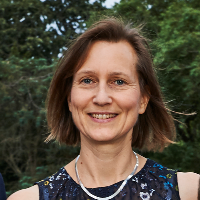Open-access journal publishing high quality, editorially selected and peer reviewed advances in biology
Communications Biology is an open access journal from Nature Portfolio publishing high-quality research, reviews and commentary in all areas of the biological sciences. Research papers published by the journal represent significant advances bringing new biological insight to a specialized area of research. We also aim to provide a community forum for issues of importance to all biologists, regardless of sub-discipline.
The scope of the journal includes all of the basic biological and biomedical sciences. Primary research published in Communications Biology includes novel experimental results, secondary data analysis and innovative experimental and computational methods. We also consider submissions from adjacent research fields where the central advance of the study is of interest to biologists, for example, chemical biology, biophysics and biomedical engineering.
The submission and review processes are managed by our in-house professional editors supported by our Editorial Board Members, who provide technical expertise across the breadth of the life sciences. We are committed to rapid dissemination of important research results. Articles are published on a continuous basis with minimal time from acceptance to publication.
Criteria for publication
To be published in Communications Biology a paper should meet several general criteria:
In general, to be acceptable, a paper should represent an advance in understanding which may influence thinking in the field.
Our in-house editors are PhD-level scientists with research experience. All in-house editors work full-time for the journal to oversee the review process, handle manuscripts as primary editors, liaise with our Editorial Board Members and enforce journal policy. Editors also engage in other activities on behalf of the journal, such as attending and organizing conferences and meeting with scientists at their institutions.
In-house editors work closely with our Editorial Board Members to ensure that all manuscripts are subject to the same editorial standards and journal policies.
Chief Editor: Brooke LaFlamme orcid.org/0000-0003-3010-4209
 Brooke received her PhD in Genetics from Cornell University, where she studied the regulation and function of proteases in Drosophila seminal fluid. She then conducted her postdoctoral research at Weill Cornell Medical College before joining the editorial team of Nature Genetics in 2013. In 2017, she left Nature Genetics to become Chief Editor for the launch of Communications Biology. Brooke is based in the New York office.
Brooke received her PhD in Genetics from Cornell University, where she studied the regulation and function of proteases in Drosophila seminal fluid. She then conducted her postdoctoral research at Weill Cornell Medical College before joining the editorial team of Nature Genetics in 2013. In 2017, she left Nature Genetics to become Chief Editor for the launch of Communications Biology. Brooke is based in the New York office.
Contact: brooke.laflamme [at] us.nature.com
Deputy Editor: Christina Karlsson Rosenthal orcid.org/0000-0002-3982-1784
 Christina Karlsson Rosenthal received her PhD in Medical Cell Biology from Uppsala University for studies of cellular senescence and carried out postdoctoral work on mitosis at the Gurdon Institute in Cambridge, UK. Christina directed her own research group focused on cell cycle control at the Karolinska Institute in Stockholm before moving back to the UK and turning to publishing. She joined the editorial team of Communications Biology in 2019 after over ten years as an editor at Nature Cell Biology and is based in the London office. Christina took on the role of Deputy Editor in January 2020.
Christina Karlsson Rosenthal received her PhD in Medical Cell Biology from Uppsala University for studies of cellular senescence and carried out postdoctoral work on mitosis at the Gurdon Institute in Cambridge, UK. Christina directed her own research group focused on cell cycle control at the Karolinska Institute in Stockholm before moving back to the UK and turning to publishing. She joined the editorial team of Communications Biology in 2019 after over ten years as an editor at Nature Cell Biology and is based in the London office. Christina took on the role of Deputy Editor in January 2020.
Contact: c.karlsson-rosenthal [at] nature.com
Senior Editor: Anam Akhtar orcid.org/0000-0002-8820-8468
 Anam received her PhD in Biomedical Sciences from Middlesex University, designing targeted liposomal constructs for selective drug delivery to HPV infected cancers. She also has research experience in genetics and the design of polymer and inorganic nanoparticles and their applications. Anam joined the editorial team of Communications Biology in July 2019 and is based in London office.
Anam received her PhD in Biomedical Sciences from Middlesex University, designing targeted liposomal constructs for selective drug delivery to HPV infected cancers. She also has research experience in genetics and the design of polymer and inorganic nanoparticles and their applications. Anam joined the editorial team of Communications Biology in July 2019 and is based in London office.
Contact: anam.akhtar [at] nature.com
Associate Editor: Caitlin Karniski orcid.org/0000-0002-1377-5118
 Caitlin received her PhD in Biology from Georgetown University, where she studied the evolution of menopause in mammals and the effects of senescence on reproduction and behavior in bottlenose dolphins Tursiops aduncus. She also has research experience in anthropogenic impacts on behavior and physiology. Caitlin joined the editorial team of Communications Biology in January 2020 and is based in the New York office.
Caitlin received her PhD in Biology from Georgetown University, where she studied the evolution of menopause in mammals and the effects of senescence on reproduction and behavior in bottlenose dolphins Tursiops aduncus. She also has research experience in anthropogenic impacts on behavior and physiology. Caitlin joined the editorial team of Communications Biology in January 2020 and is based in the New York office.
Contact: caitlin.karniski [at] us.nature.com
Associate Editor: Luke R. Grinham orcid.org/0000-0001-5583-8052
 Luke received his PhD in Evolutionary Biology from the University of Cambridge, where he studied the functional ecomorphology and evolution of facultative bipedality in archosaurs and lepidosaurs. He also has research experience in locomotor biomechanics of other vertebrate groups, including big cats and giraffes. Luke joined the editorial team of Communications Biologyin May 2020 and is based in the London office.
Luke received his PhD in Evolutionary Biology from the University of Cambridge, where he studied the functional ecomorphology and evolution of facultative bipedality in archosaurs and lepidosaurs. He also has research experience in locomotor biomechanics of other vertebrate groups, including big cats and giraffes. Luke joined the editorial team of Communications Biologyin May 2020 and is based in the London office.
Contact: luke.grinham [at] nature.com
Associate Editor: George Inglis orcid.org/0000-0002-9069-5242
 George received his PhD in Genetics and Molecular Biology from Emory University, where he studied mouse models of voltage-gated sodium channel dysfunction and epilepsy. He also has research experience in epigenomics and in vitro models of neuronal development. George joined the editorial team of Communications Biology in September 2020 and is based in the New York office.
George received his PhD in Genetics and Molecular Biology from Emory University, where he studied mouse models of voltage-gated sodium channel dysfunction and epilepsy. He also has research experience in epigenomics and in vitro models of neuronal development. George joined the editorial team of Communications Biology in September 2020 and is based in the New York office.
Contact: George.Inglis [at] us.nature.com
Associate Editor: Karli Montague-Cardoso orcid.org/0000-0001-6614-9068
 Karli received her PhD in Neuroscience in 2011 from University College London, where she identified potential therapeutic targets for Motor Neuron Disease, with a focus on calcium signalling and endoplasmic reticulum stress. She carried out her postdoctoral work at King’s College London, investigating the cellular and molecular mechanisms governing embryonic cranial nuclei development. She then moved on to focus on neuroimmune interactions underlying different forms of chronic pain, with a focus on chemotherapy pain and arthritic pain. She also has research experience in mitochondrial biogenesis, microRNA signalling, cognitive neuroscience, electrophysiology and pharmacology. Karli joined the editorial team of Communications Biology in October 2020 and is based in the London office.
Karli received her PhD in Neuroscience in 2011 from University College London, where she identified potential therapeutic targets for Motor Neuron Disease, with a focus on calcium signalling and endoplasmic reticulum stress. She carried out her postdoctoral work at King’s College London, investigating the cellular and molecular mechanisms governing embryonic cranial nuclei development. She then moved on to focus on neuroimmune interactions underlying different forms of chronic pain, with a focus on chemotherapy pain and arthritic pain. She also has research experience in mitochondrial biogenesis, microRNA signalling, cognitive neuroscience, electrophysiology and pharmacology. Karli joined the editorial team of Communications Biology in October 2020 and is based in the London office.
Contact: karli.montague-cardoso [at] nature.com
Associate Editor: Eve Rogers orcid.org/0000-0002-1841-7942
 Eve received her PhD from the University of Liverpool, investigating the role of the mechanical environment and circadian rhythm in adult stem cell differentiation. During her postdoctoral studies at UCL, she employed gene editing technologies, such as CRISPR/Cas and lentiviral vectors, in hiPSC and hESC research. Eve joined the editorial team of Communications Biology in January 2021 and is based in the London office.
Eve received her PhD from the University of Liverpool, investigating the role of the mechanical environment and circadian rhythm in adult stem cell differentiation. During her postdoctoral studies at UCL, she employed gene editing technologies, such as CRISPR/Cas and lentiviral vectors, in hiPSC and hESC research. Eve joined the editorial team of Communications Biology in January 2021 and is based in the London office.
Contact: eve.rogers.1 [at] nature.com
Associate Editor: Gene Chong orcid.org/0000-0001-7250-4046
 Gene received his PhD in Chemistry from Johns Hopkins University, where he used molecular dynamics simulations and multiscale modeling to study the design and interactions of nanoparticles with biomolecules. He did his postdoctoral research at the University of Maryland, Baltimore, using computational methods to investigate glycobiology, antibody design, and immune receptor signaling. Gene joined the editorial team of Communications Biology in August 2021 and is based in the New York office.
Gene received his PhD in Chemistry from Johns Hopkins University, where he used molecular dynamics simulations and multiscale modeling to study the design and interactions of nanoparticles with biomolecules. He did his postdoctoral research at the University of Maryland, Baltimore, using computational methods to investigate glycobiology, antibody design, and immune receptor signaling. Gene joined the editorial team of Communications Biology in August 2021 and is based in the New York office.
Contact: gene.chong [at] us.nature.com
https://www.nature.com/commsbio/editorial-board





